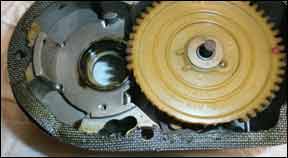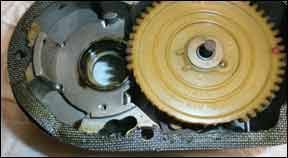Cessna 402C
Failed Nose Gear Microswitch
The nosegear collapsed on landing. The nosegear actuator was removed and tested in a controlled environment. When the actuator was cold-soaked, the microswitch (p/n 1CH16) failed to activate properly, giving a false indication the gear was down and locked. Due to gear failure, both aircraft propellers struck the ground, causing sudden stoppage to the engines. The aircraft also suffered structural damage to the nose section.
Part Total Time: 352.0 hours

288
Piper PA-46-500TP Meridian
Nose Gear Torque Link Missing Bolt
The pilot noticed a vibration shortly after landing. Inspection of the nose landing gear assembly found the bolt, nut, washer and cotter key missing from the center torque link (p/n: 106680002) and the tire was lightly flat-spotted
Part Total Time: 132.0 hours
Continental S6RSC-25P Magneto
Failed Distributor Gear I
The SR22’s crew reported severe engine vibration and elevated EGT in cylinder number three. Inspection revealed the r/h magneto (p/n 10-500556-101) was inoperative. The magneto was replaced with a new one and a test flight confirmed normal operation.
When the removed magneto was disassembled, the distributor gear was found to have failed
Part Total Time: 673.0 hours
Continental S6RSC-25P Magneto
Failed Distributor Gear II
The SR22’s crew reported severe engine vibration during takeoff. Inspection revealed the l/h magneto was inoperative. It was replaced with a new one. Disassembly of the removed magneto (p/n 10-500556-101) found the distributor gear to have failed. The magneto overhaul manual does not include mandatory replacement of the distributor gear. (Ed. note: These two magneto failures occurred on the same airplane, less than two hours apart.)
Part Total Time: 674.0 hours
Superior SL36006WA1E Cylinder
Cracked
This cylinder (installed on a Lycoming O-360-A4M engine powering a Piper PA-28-180) had no compression. Upon investigation, air was leaking from the back of the cylinder assembly at the point where the fins step up to the next size. With an inspection mirror held between the baffling and the back of the cylinder, a crack could be seen. The crack started at the top spark plug hole, continuing toward the back of the cylinder, and down and through the exhaust valve seat to the rear exhaust mounting stud.
Part Total Time: 1533.0 hours




